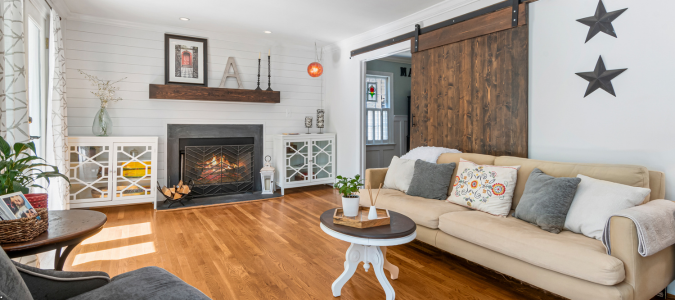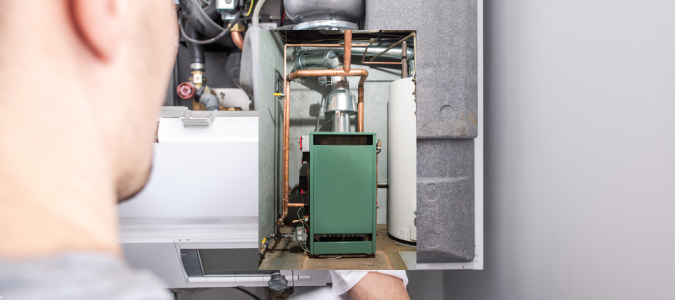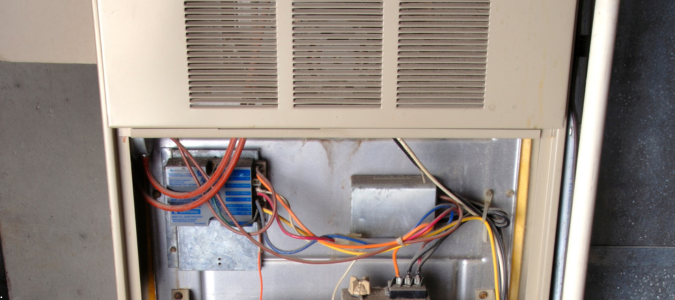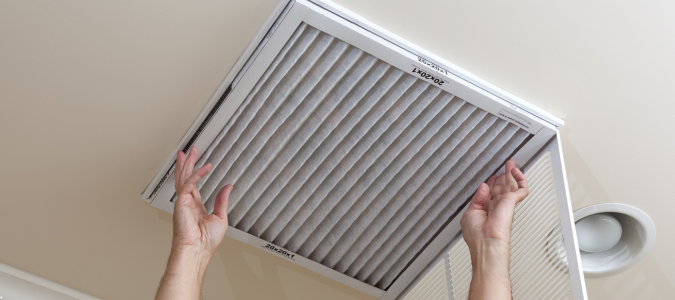Have you ever turned on your heater, only to notice cold air blowing through the vents? Calling in an HVAC technician to repair the unit might be your first move. Before you do that, you can start by understanding why your heater is malfunctioning.
Some issues are easy to fix on your own, while others require help from an HVAC pro.
Common Reasons Why Your Heater Is Blowing Cold Air
A frequent complaint of homeowners during the colder months is noticing that their heater is blowing cold air. There are typically eight reasons why this happens.
- The heater is still warming up
- The pilot light is out
- The heater is not powerful enough
- Incorrect thermostat setting
- Dirty air filter
- Blower motor problems
- Cracked heat exchanger
- Blocked or leaky ductwork
Let’s dive into each of these issues.
The Heater Is Still Warming Up
When you turn on your heater after months of inactivity, it’s normal for it to start by blowing cold air. The ductwork is filled with cold air, and the furnace needs some time to generate warmth.
During the warm-up period, the furnace ignites, but the blower fan does not activate immediately. This delay ensures that the air circulating through your home is heated properly. If the blower turns on too soon, it will circulate cold air.
The Pilot Light Is Out
The pilot light is a small flame that ignites the main burner. The flame stays lit even when the furnace isn’t actively heating. When it goes out, the furnace cannot generate heat. This typically happens because:
- The thermocouple is faulty or dirty
- The pilot orifice is clogged with debris or soot
- The heater has a gas supply issue
- Airflow around the furnace is restricted
The Heater Is Not Powerful Enough
An undersized heater may struggle to keep your home warm, allowing cold air to blow from the vents. To determine the right furnace size based on insulation, climate and home layout, the U.S. Department of Energy recommends using load calculations rather than following fixed British thermal unit (BTU) ranges.
As a rough guide, one ton of heating power (12,000 BTU) covers 400 to 500 square feet in an average home, or 800 to 1,000 square feet in a well-insulated, energy-efficient house. An air conditioning specialist can determine the best unit size for your home.
Incorrect Thermostat Setting
A misconfigured thermostat can cause your heater to blow cold air instead of warm. If the system mode or fan setting isn’t aligned with your heating schedule, the furnace may not cycle on when needed. Even small errors in programming or calibration can disrupt the heating process, especially with smart thermostats that control multiple zones.
Dirty Air Filter
The air filter traps dirt and debris to keep the air in your home clean and protect the furnace’s internal components. When the filter becomes clogged or damaged, it restricts airflow. This causes the furnace to overheat and shut off its burners, forcing cold air through the vents.
Blower Motor Problems
The blower motor pushes warm air through the furnace’s ductwork and into your home. If it’s not working properly, the heated air stays trapped inside the furnace.
Signs of a blower motor problem include:
- Weak or no airflow coming from vents
- Loud squealing, rattling or grinding noises
- A burning smell near the furnace
- The rooms are still cold, although the furnace is running
When the blower motor fails completely, the furnace may run its burners, but you’ll only feel cold drafts because the warm air isn’t being distributed.
Cracked Heat Exchanger
The heat exchanger is a sealed metal chamber inside your furnace that transfers heat from the combustion gases in the burners to the air circulating through your home. Over time, repeated heating and cooling cycles can cause the heat exchanger to weaken and crack. When this happens, the furnace shuts down its burners.
A cracked heat exchanger is often one of the signs you need a new furnace, since repairing it can often be more costly than replacing the HVAC unit.
Blocked or Leaky Ductwork
The ductwork carries warm air from the furnace to different rooms. If sections are blocked by debris, airflow becomes restricted. Then, you may notice your heater blowing cold air. Leaks in the ducts let heated air escape into attics, crawl spaces or walls, reducing the warmth that reaches your living areas.
How Do You Fix a Heater That Blows Out Cold Air?
There are a few troubleshooting steps you can take without technical expertise. These fixes can save you time and money if the issue is minor. These steps include:
- Inspect vents
- Use the right thermostat settings
- Clear the area around the furnace
- Check for furnace error codes
- Replace air filters
- Clean the vent covers
Inspect Vents
Inspect each room in your home to make sure the air vents are open. Here is what you need to do:
- Listen for whistling sounds around each vent, which can indicate a partial blockage
- Move furniture, rugs or curtains that could block airflow
- Vacuum or wipe away dust and debris around vents
Use the Right Thermostat Settings
Incorrect thermostat settings can keep your furnace from heating. Here’s how to fix it:
- Set the system mode to heat, not cool
- Switch the fan to auto so it only blows warm air when the furnace is running
- Set the thermostat to 68 to 70 degrees when you’re awake, and then dial it down when you’re asleep or away
- Review programmed schedules to make sure heating cycles match your routine
- Replace thermostat batteries if the screen is dim or unresponsive
Clear the Area Around the Furnace
Clutter near the HVAC unit can block airflow and increase the risk of a fire. Remove stored items like cleaning supplies and boxes, and make sure nothing is leaning against the furnace. It’s best to keep at least three feet of open space around the heater.
Check for Furnace Error Codes
Modern furnaces use lights or digital displays to indicate a problem. Look for an error code on the furnace’s control board and check the owner’s manual for troubleshooting steps.
Some common error codes to watch out for include:
- Ignition failure
- Flame sensor error
- Pressure switch issue
- Limit switch error
Write down or take a picture of the error code and share it with an HVAC technician if the problem requires professional help.
Replace Air Filters
Modern furnaces use a disposable air filter made of paper or fiberglass. If it gets clogged, follow these steps to replace it:
- Turn off the furnace and remove the air filter
- Insert a new filter of the same size and type
- Mark the installation date so you know when to replace it next
Clean the Vent Covers
In addition to making your heater blow cold air, dust buildup on vent covers can block airflow and circulate debris through your home.
Follow these steps to clean them:
- Remove the vent covers with a screwdriver, if needed
- Wash them with warm, soapy water and let them dry completely
- Vacuum the vent opening to remove dust or debris
- Reinstall the covers securely
How Do You Know If Your Furnace Needs to Be Reset?
If the heater is not turning on or keeps blowing cold air, a simple reset might get it running again.
You may need to reset your furnace if you notice:
- Unexpected shutdowns during normal operation
- Failure to start even when the thermostat is set correctly
- Cold air is blowing instead of heat
- Short cycling, where the furnace turns on and off repeatedly
If a reset doesn’t solve the problem, call in a licensed HVAC technician to diagnose and fix the issue.
What Is the Most Common Cause of a Heater Not Working?
The most common reason a heater stops working is a dirty air filter. If the filter gets packed with dust and debris, it blocks airflow, causing the furnace to overheat and shut down its burners. This leaves only the blower running, which pushes out cold air.
The general recommendation is to change your air filter once every three months. However, if you have pets, allergies or live in a dusty area, you may need to change it more often. Regular filter changes keep the system running smoothly.
Stay Ahead of Heating Problems
Regular maintenance and setting your thermostat to the best temperature for your heater in winter can help extend the life of your furnace and prevent costly breakdowns. Don’t wait until a minor heating issue turns into a bigger problem. Schedule an annual maintenance with a licensed HVAC technician to keep your system running smoothly.
ABC Can Keep You Comfortable In Your Home
Relaxing at home becomes a challenge if you are constantly either too hot or too cold. If you have problems keeping your home temperature comfortable, bring in a professional to advise you on your options. The experienced technicians at ABC Home & Commercial Services can make any needed repairs, perform maintenance and even help you choose and install a new unit, if it makes more sense to replace your unit.




